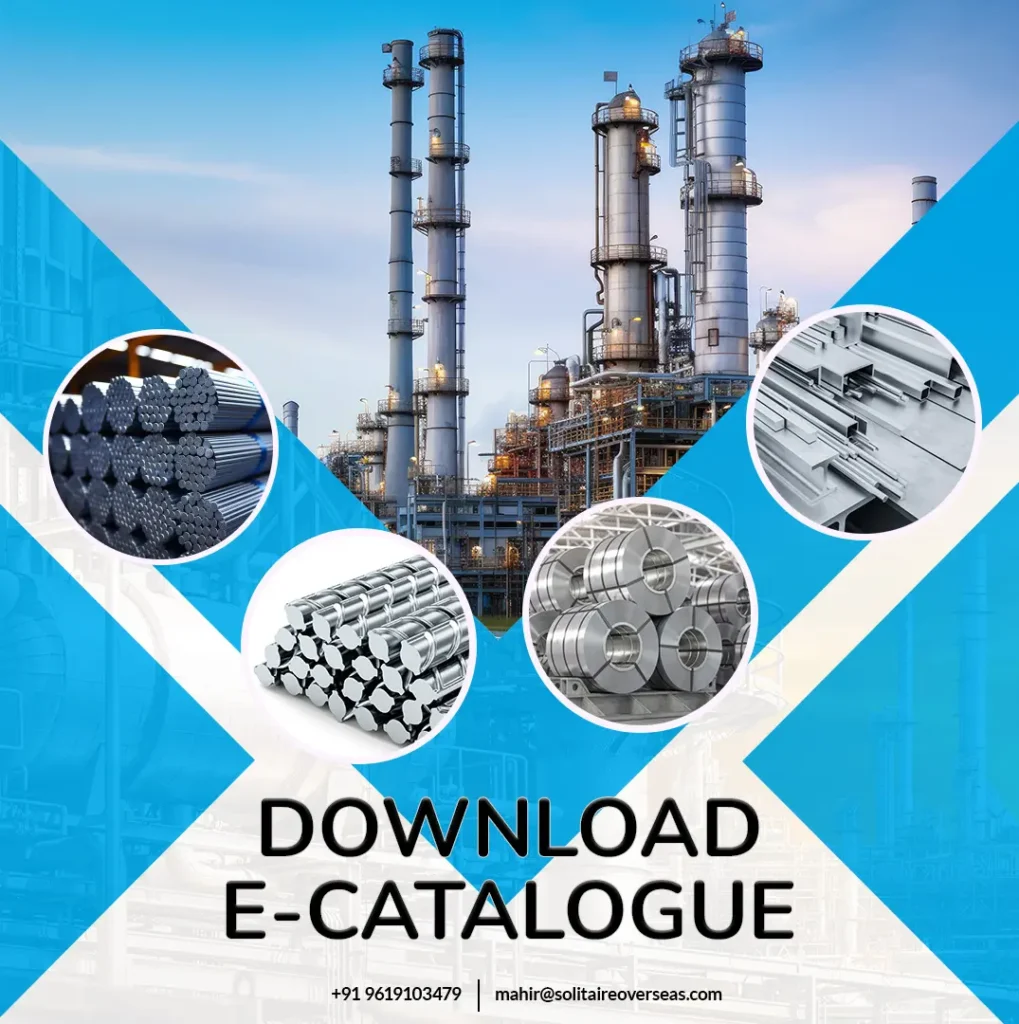A Complete Guide Understanding the Heat Exchanger Tubes

Heat exchanger tubes are essential components used to transfer heat between different mediums for heating, cooling, or reheating. These tubes are different from standard steel pipes, as their outside diameter is strictly controlled, ensuring high precision. Heat exchanger tubes are available in various metals such as steel, copper, brass, aluminum, and stainless steel, with different wall thicknesses defined by the Birmingham Wire Gauge (B.W.G.).
At Solitaire Steel, we specialize in tube heat exchanger solutions, offering a range of thin-wall heat exchanger tubing designed to meet the exact needs of companies fabricating shell and tube heat exchangers. These heat exchanger tubes are ideal for transferring heat through conduction, where mediums like liquid, vapor, or gas pass through the tubes. For example – an air cooled heat exchanger uses air to cool a liquid, while a shell & tube heat exchanger passes fluids for heat transfer.
The term “heat exchanger” is often used when referring to tube heat exchangers and plate heat exchangers, which are widely used in industries like refrigeration, chemical processing, air conditioning, and power generation. The performance of a plant can be significantly influenced by the efficiency of these heat exchanger tubes. This Blog highlights everything you need to know about heat exchanger tubes, including the different types and their various applications.
Types of Heat Exchanger Tubes and Their Characteristics
Choosing the right heat exchanger tube depends on factors such as the required heat transfer rate, heat load, and temperature. These elements help determine the size and design of the heat exchanger tubes. The tubes can be manufactured in straight lengths or U-bent shapes, depending on the specific needs of the application.
While heat exchangers may vary in size and complexity, their basic design remains largely the same. The key factors that influence the efficiency of the heat exchanger tubes include the tube material, wall thickness, and surface area. These characteristics play an important role in ensuring the tubes perform effectively in their respective applications, whether for cooling, heating, or transferring heat between fluids.
Write to us
Classification of Heat Exchanger
Heat exchanger tubes are designed to manage the flow of fluids in various configurations to optimize heat transfer. There are four primary types of flow configurations: Parallel Flow, where fluids travel in the same direction; Counter Flow, where fluids move in opposite directions for better heat exchange efficiency; Cross Flow, where fluids flow perpendicular to one another; and Hybrid Flow, which involves multiple flow passes to enhance performance. Each configuration impacts how efficiently heat is transferred between the fluids.
The flow rate, or speed at which fluid moves through the tubes, is critical for heat exchange. An increased flow rate improves the heat transfer capacity, but it also increases the mass and velocity of the fluid. This results in a drop in pressure, which can make energy removal more challenging. Balancing flow rate and pressure is key to maintaining optimal heat exchanger performance.
Classification Based On Heat Transfer Mechanism
Heat exchanger tubes operate using two main types of heat transfer mechanisms: single-phase and two-phase. In the single-phase process, the fluid remains in the same state as it enters and exits the tube, without any phase change. This means that the fluid stays either as a liquid, gas, or vapor throughout the heat transfer. In contrast, the two-phase process involves a change in the fluid’s state during the heat transfer process, such as liquid turning into vapor or vice versa.Based on these heat transfer mechanisms, heat exchangers can be categorized into four types:
- Single-phase convection on both sides – where both fluids remain in the same phase.
- Single-phase on one side and two-phase on the other side – where one fluid changes phase while the other does not.
- Two-phase convection on both sides – where both fluids undergo phase changes.
- Radiative and combined convection heat transfer – combining both radiation and convection methods for more efficient heat transfer.
Classification Based On Construction Methods
Heat exchanger tubes can be classified based on their construction method into the following types:
- Capacitive Heat Exchangers: In these, warm and cool fluids alternate flow through the same channel. There are two types:
- Static Heat Exchangers: The components remain stationary while the fluids flow.
- Dynamic Heat Exchangers: The components move during the process.
- Recuperative Heat Exchangers: Here, each fluid flows through its own separate channel simultaneously. These are of two types:
- Direct Contact Heat Exchangers: Fluids come into direct contact, allowing heat transfer between them without separation.
- Indirect Contact Heat Exchangers: Fluids flow separately within the tube, transferring heat indirectly.
Components & Materials Used: The components depend on the heat exchanger type and its intended use. Common components include tubes, shells, plates, fins, and spiral tubes.
Factors to Consider When Selecting a Heat Exchanger:
- Type of liquids in both primary and secondary circuits
- Temperature and flow rates of both fluids
- Purpose of the primary circuit
Applications of Heat Exchangers
Heat exchanger tubes are commonly used in industries like power generation, chemical manufacturing, shipbuilding, fertilizer production, refineries, and steel plants. They play a crucial role in various high-pressure equipment and systems such as air preheaters, air coolers, pressure vessels, and heat exchanger tube sheets. Additionally, they are found in boilers, cryogenic pressure vessels, and finned tube applications, where efficient heat transfer is essential.
Conclusion
Heat exchanger tubes are essential components in various industries, providing efficient heat transfer for a wide range of applications. From power plants to chemical factories and refineries, these tubes help optimize energy use and improve system performance. With different types like shell and tube, plate, and finned tube exchangers, they cater to various needs, ensuring reliable and effective heat management in high-pressure and specialized equipment.
FAQs
A heat exchanger tube is a device that transfers heat between two fluids, separating them while allowing thermal energy to flow from one to the other. It is used for both cooling and heating processes, ensuring efficient heat transfer without mixing the mediums.
U-tube heat exchangers are used in industries like chemical processing, power generation, and oil refining. Their design allows for efficient heat transfer between fluids and gas, managing temperature control in diverse applications. The U-shaped tubes facilitate expansion and contraction, making them suitable for high-pressure and high-temperature conditions.
Heat exchangers transfer heat between media (gas, liquid, or both) to meet process requirements, providing heating or cooling while preventing mixing or ensuring direct contact.


